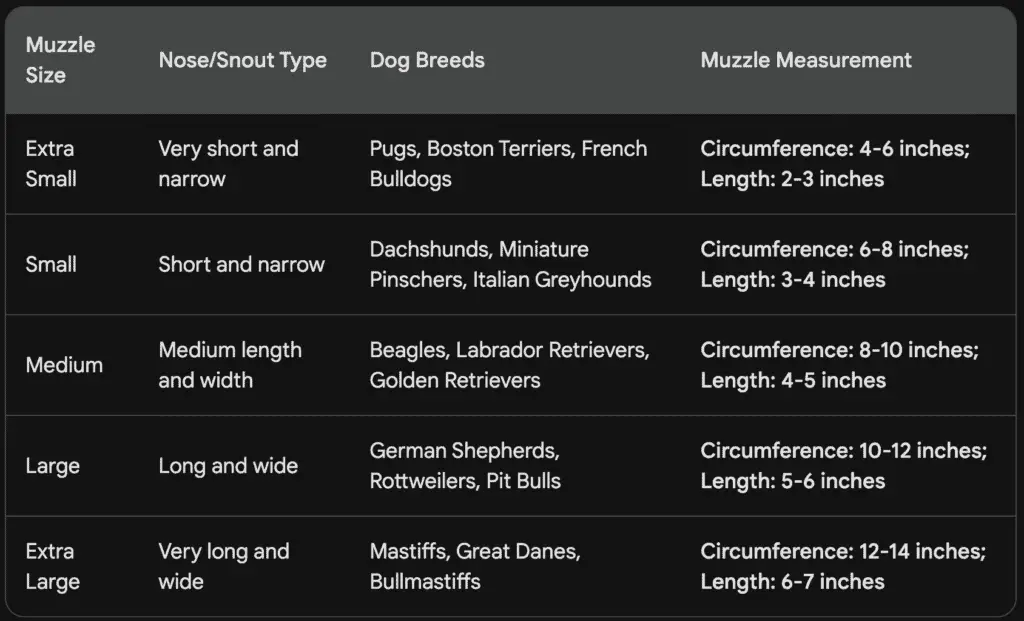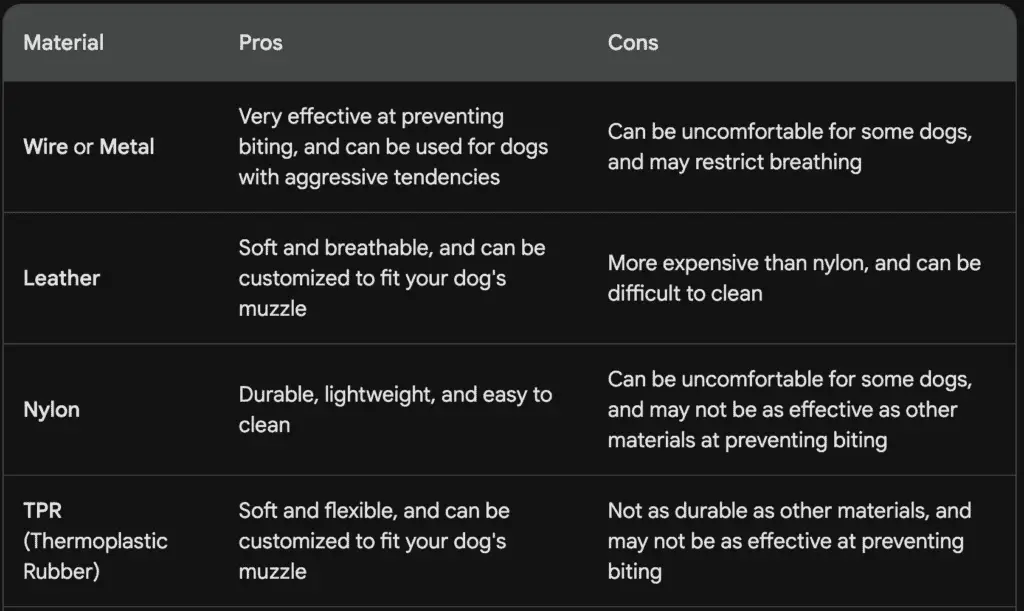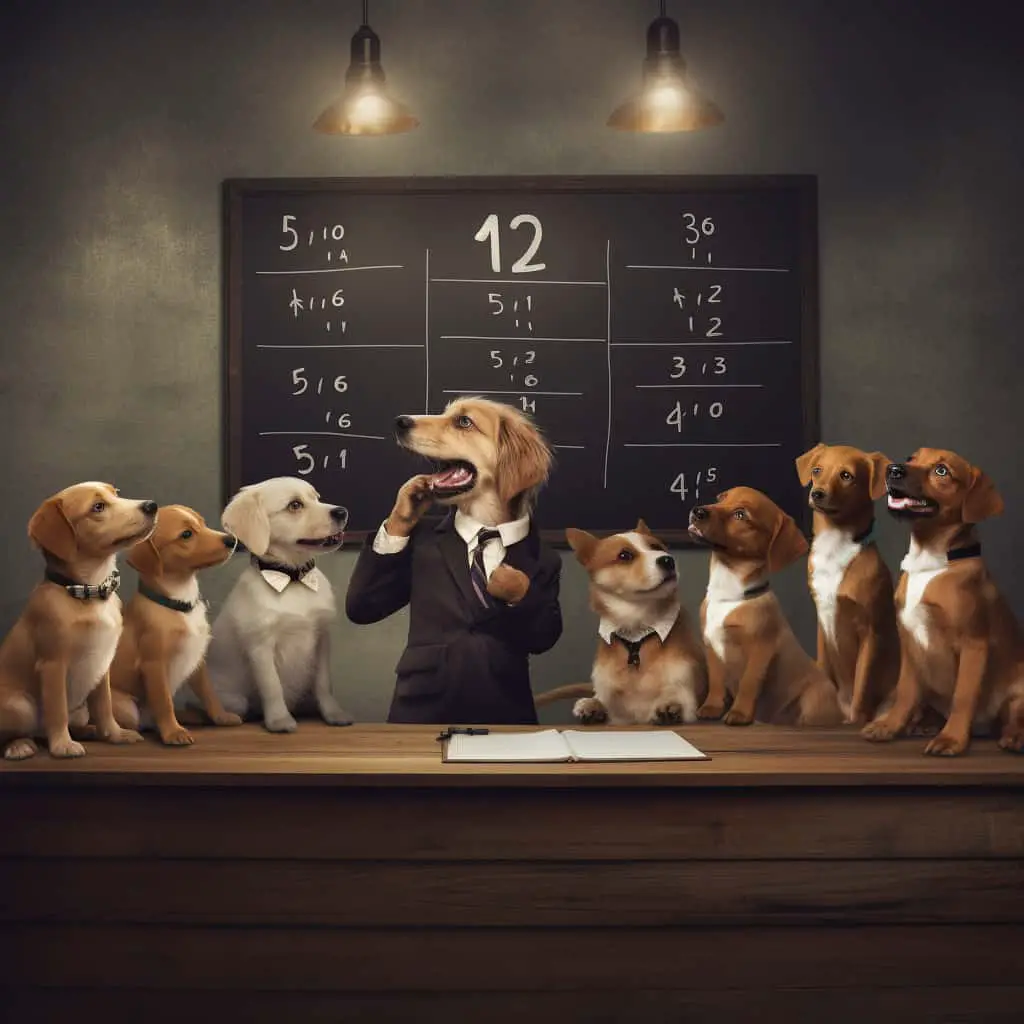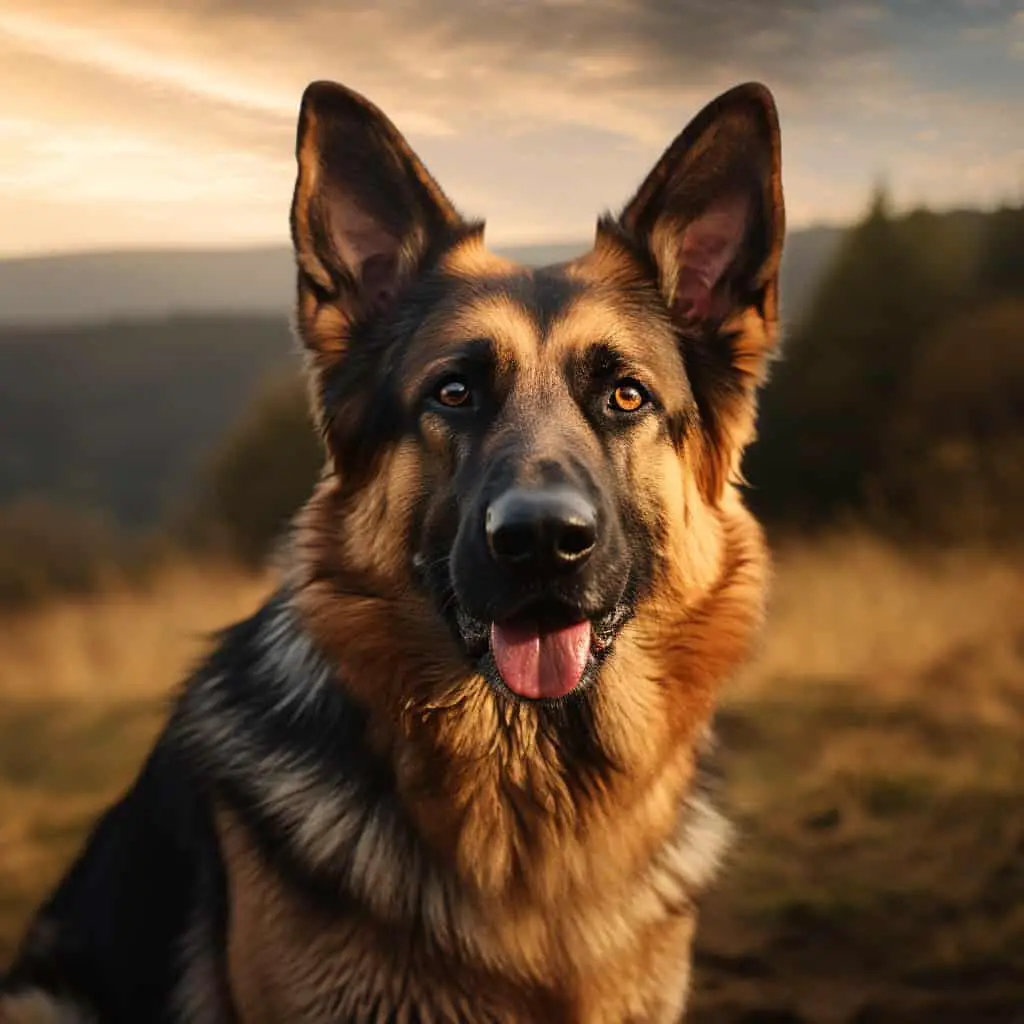In an astonishing display of variety, a Dog Muzzle Size Chart can span from a petite 3 inches for the smallest breeds to a substantial 14 inches for the giants of the dog world!
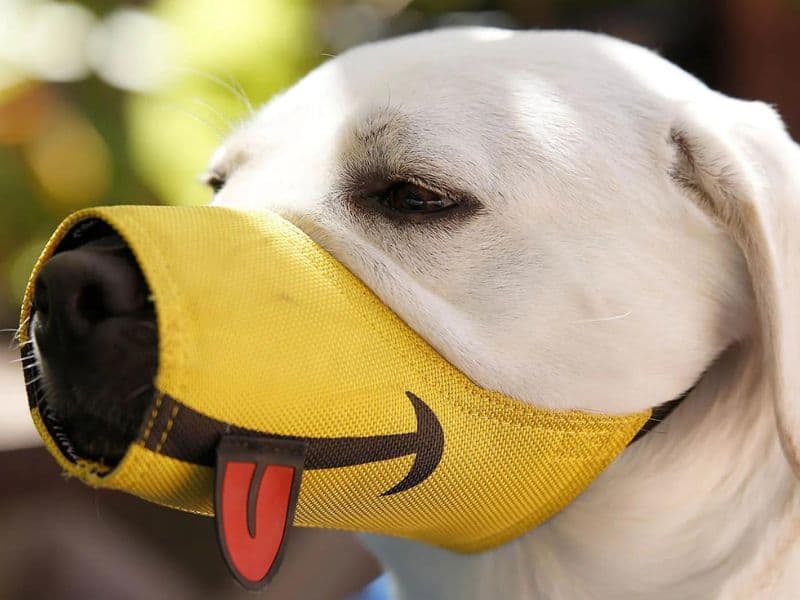
Let’s talk about what you should know about muzzle sizes and look at a dog muzzle size chart. Finding the right muzzle size for your dog is crucial for their safety and comfort.
This post will discuss the importance of ensuring a proper fit for your dog’s muzzle and the limitations of relying solely on breed guidance. By understanding these factors, you can make an informed decision and protect your furry friend during their training or other necessary situations.
Dog Muzzle Size Chart: Finding a Properly Fitting Muzzle for Your Dog
Finding the perfect muzzle for your furry friend is key. It’s vital for their safety and the safety of those around them. Relying solely on breed guidance might not work, as different breeds have distinct snout sizes and shapes. So, measuring your pup’s snout accurately is crucial.
Follow step-by-step instructions to get the length and circumference measurements. This information helps you pick the best muzzle that fits your pup properly.
A tight muzzle might cause breathing problems, while a loose one won’t be effective in preventing aggression or biting.
Experienced professionals will tell you that the shape of your pooch’s nose should be taken into account when picking a muzzle.

Always prioritize comfort and proper fit. Look for muzzles with straps that evenly distribute pressure on your dog’s face. Extra space inside the muzzle can make it more comfortable for longer periods. Also, proper training and gradual acclimatization are essential for a safe and successful muzzle-wearing experience.
Some muzzle brands have unique features and benefits for various needs, such as aggression, panting, and bite prevention.
You can also find helpful videos on YouTube or take an online course and video from Leerburg to accurately measure your pup. If you need further assistance, manufacturers can be reached directly.
Dog Muzzle Size Chart
Discover the perfect muzzle for your fur family with our comprehensive Dog Muzzle Size Chart. Our indispensable tool will guide you through the maze of canine facial variations, plus take a look at our step-by-step instructions on accurately measuring your pet’s snout.
Here is a dog muzzle size chart that includes dog nose/snout types:
Note: These are just general guidelines, and the actual muzzle size of your dog may vary. Be sure to measure your dog’s muzzle before purchasing a muzzle.
Factors that can affect the muzzle size of a dog:
- Breed: Some breeds, such as Pugs and Boston Terriers, have naturally shorter and narrower muzzles than other breeds, such as Labrador Retrievers and Golden Retrievers.
- Gender: Male dogs typically have larger muzzles than female dogs.
- Age: The muzzle size of a dog will increase as they grow older.
- Weight: A dog’s muzzle size increases as they gain weight.
It is important to measure your dog’s muzzle regularly to ensure that its muzzle fits properly. A too tight muzzle can cause discomfort and even injury, while a too loose muzzle can slip off.
How to measure your dog’s muzzle:
To measure your dog’s muzzle, use a soft tape measure and place it around the widest part of the muzzle. Be sure to leave a few inches of slack so that the muzzle can move freely.
Once you have measured your dog’s muzzle, you can use the chart above to find the correct size muzzle. It is always a good idea to try on a muzzle before you buy it to make sure that it fits properly.
Step-by-step instructions to accurately measure your dog’s snout and ensure a well-fitted muzzle
Here are step-by-step instructions on how to do this:
1. Gather Necessary Tools: You’ll need a soft tape measure, a piece of string, and a ruler.
2. Measure the Length: First, measure the length of your dog’s snout. Start from the point just below your dog’s eyes and measure down to the tip of their nose.
3. Measure the Circumference: Next, measure the circumference of your dog’s snout. Wrap the tape measure or string around the widest part of their snout, usually around an inch below their eyes.
4. Measure the Width: Some muzzle types also require a width measurement. This is typically done by measuring the widest point of your dog’s snout from one side to the other, perpendicular to the length.
5. Record the Measurements: Keep a note of all the measurements, as you will need these when comparing to the size chart of the muzzle you plan to purchase.
6. Check for Comfort Space: It’s also important to allow for enough space for your dog to pant and drink water when wearing the muzzle. This is usually accounted for in the muzzle’s design, but as a rule of thumb, add about half an inch to your dog’s length measurement to ensure there’s enough room.
7. Compare with Size Charts: Every muzzle brand has its own sizing chart, so compare your measurements with the chart for the specific brand and style of muzzle you plan to purchase.
Remember, a correctly sized muzzle should be secure but not overly tight; your dog should be able to pant and drink. It’s always better to err on the side of a bit too loose rather than too tight.
Additional tips for choosing a muzzle for your dog:
- Choose a muzzle that is made of a soft, breathable material.
- Choose a muzzle that has a comfortable fit and does not restrict your dog’s breathing or vision.
- Choose a muzzle that is easy to put on and take off.
- Train your dog to wear the muzzle before you need to use it in a real-world situation.
With proper care and attention, you can find a muzzle that is the right size and fit for your dog.
Limitations of relying solely on breed guidance for muzzle size
Relying only on breed guidance for muzzle sizing can be tricky. Breed guidelines can give you a starting point, but they don’t account for every dog’s unique snout shape and size.
That’s why it’s important to take accurate measurements of both the length and circumference of your pup’s snout. This ensures the right fit and optimizes safety.
Breed guidance also doesn’t take into account other factors that impact muzzle suitability. Rules, biting incidents, and comfort are all important considerations. Soft straps with enough width can help prevent chafing and discomfort during extended use. So, it’s best to go beyond breed recommendations when selecting a muzzle for your pup.
Safety must come first. Choose a muzzle that meets your dog’s specific needs and provides a comfortable fit.
This is essential for responsible dog ownership and for maintaining harmony between pets and their environment. Take action now to ensure a safer future for your pup and everyone else around them. Find the perfect fitting muzzle for your furry friend today!
How to Measure Your Dog’s Snout
Accurate measurements are crucial when it comes to finding the right muzzle size for your dog’s safety. In this section, we will provide step-by-step instructions on measuring your dog’s snout, including length and circumference.
We will also highlight the significance of obtaining precise measurements to ensure a proper fit for your furry companion. Remember, a well-fitted muzzle is essential for both your dog’s comfort and the safety of those around them.
Step-by-step instructions for measuring length and circumference
- Get the perfect muzzle for your pup by taking accurate measurements of their snout length and circumference. This is essential, as individual dogs within the same breed can vary in size and shape.
- Measure length by placing a ruler or tape measure from the tip of their nose to where their snout meets their face.
- Then, measure the circumference by wrapping a tape measure around the widest part of their snout.
- Keep in mind that some muzzles may require additional measurements. Look up manufacturer guidelines for any extra measurements needed.
- By measuring precisely, you can provide a properly fitting muzzle. This allows your dog to pant, eat treats, and feel comfortable while also preventing biting or aggression.
So don’t forget to get the right size muzzle for your pup! Follow these steps to ensure their safety and comfort.
Significance of accurate measurements in ensuring a proper fit
Accurate measurements are key for a proper fit for your pup’s muzzle. Get precise measurements of the snout’s length and circumference to select the ideal size that provides comfort and security. Relying only on breed guidance may not be enough, as individual dogs in a breed can have different snout sizes.
A fitting muzzle is important for various reasons:
- Avoiding an ill-fitting or tight muzzle that restricts breathing or causes chafing prevents potential injury and discomfort.
- Ensures the safety of others by preventing aggression and biting. With an accurate size, there is minimal risk of the dog escaping or biting through the muzzle. Also, your dog can pant and drink freely with an ideal fit.
Measurement is crucial for determining the correct size. Certain muzzles are designed for long, slim snouts or broad, flat-nosed dogs. Knowing what your pup needs helps in narrowing down options.
For the perfect fit, take into account the rules and regulations, and pick a wide and soft muzzle. Add extra room if your pup has a longer snout or prefers more space between its mouth and the restraint. Muzzle training and gradual acclimatization are also necessary.
Muzzles for every snout and style, so every pup can look fierce while staying safe!
Different Types of Muzzles and Their Features
When it comes to muzzle safety for our dogs, it’s important to understand the different types of muzzles and their unique features.
Dog muzzles recommended by trainers, charities, and veterinarians
The best muzzles provide a secure and comfortable fit, allowing dogs to pant, drink water, and even take treats. This makes them a humane and reliable option for owners in need of bite prevention or behavior management tools.
There are various sizes to accommodate different dog breeds and nose shapes. Professionals such as trainers and veterinarians can offer advice based on your pet’s specific needs.
Dog Muzzle Materials
Material options to consider when it comes to muzzles. Each has its own advantages.
- TPR muzzles offer flexibility and durability.
- Biothane is great for wet conditions.
- Leather looks classic and is breathable.
- Plastic is lightweight and perfect for grooming or vet visits.
- Rubber is soft and flexible yet still allows panting and drinking.
- Metal muzzles provide the highest bite protection.
- Nylon/mesh is lightweight and good for warmer climates.
Considering factors such as comfort, durability, breathability, flexibility, and how much restriction is needed all come into play.
Owners should prioritize their dog’s comfort and safety. Cleaning and maintenance should also be factored in. Plus, the muzzle should fit the breed and nose shape.
In short, understanding the different muzzle materials lets owners make a wise choice. Comfort, safety, and suitability should be top priorities. This way, dogs can stay safe and healthy, and everyone else can be too.
Muzzle designs for different nose shapes: long and slim, broad, flat-nosed
Muzzles come in different shapes and cater to different nose shapes of dogs. Long and slim-nosed dogs need muzzles with longer baskets or snout guards for ample room, while broad-nosed dogs need wider baskets or snout guards for a comfortable fit.
Flat-nosed dogs, like brachycephalic breeds, require special consideration. Thus, muzzle designs tailored to these breeds allow proper airflow and prevent biting or unwanted behavior.
Owners must choose muzzles that fit their dog’s needs for not only the comfort of the dog but also the safety of those around them. Finding the right muzzle is like a dog’s version of online shopping but without the option to return if it doesn’t fit.
Choosing the Right Muzzle for Your Dog
Choosing the right muzzle for your dog involves considering specific needs, ensuring proper fit and comfort, and understanding the importance of muzzle training and gradual acclimatization.
With safety as the top priority, finding the right muzzle size is crucial for rule adherence, bite prevention, and overall safety measures. By exploring these key aspects, you can make an informed decision to keep your dog and others protected.
Considerations for specific needs: rule adherence, bite prevention, safety measures
When selecting a muzzle for your pup, consider specific needs such as rule adherence, bite prevention, and safety measures. Ensure the muzzle adheres to any rules or regulations set by local authorities.
Plus, choose one that effectively stops biting, providing a safe environment for both your dog and those around them.
It is vital to prioritize these factors to ensure well-being. Follow applicable rules or regulations, select a muzzle that prevents biting, and prioritize safety measures from professionals.
Also, bear in mind additional factors like proper fit and comfort. Choose wide and soft straps and extra space for your dog‘s comfort. Gradual acclimatization and muzzle training are also essential.
By taking into account all these considerations, you can find a fitting muzzle that meets your needs and keeps your pup safe and comfortable.
Proper fit and comfort: wide and soft straps, adding extra space for comfort
Properly fitting muzzles are essential for a dog’s safety and comfort. Including wide and soft straps will ensure the muzzle fits securely and comfortably. Plus, extra space is needed to allow the dog’s snout room to move.
Measurements must be accurate to guarantee a proper fit. Muzzle training and gradual acclimatization are vital too. Breed guidance can be limiting. Different types of muzzles are suited for dogs with different noses.
Importance of muzzle training and gradual acclimatization
Muzzle training and gradual acclimatization are vital for a dog’s safety and well-being. It is essential to understand the importance of this process, as it helps dogs get used to the muzzle and prevents any negative associations.

Desensitizing dogs to the muzzle involves introducing it in short periods and rewarding positive behavior. Treats and toys can be used as positive reinforcement.
Gradual acclimatization is also important. The muzzle should be worn during low-stress activities such as feeding or playtime. This will help the dog become accustomed to it.
Patience and consistency are needed for successful muzzle training. Rushing or forcing a dog to wear a muzzle can result in resistance. Positive reinforcement techniques should be used, and advice from trainers or professionals is recommended.
Overall the muzzle training and gradual acclimatization process is essential for dog safety. It can help dogs become comfortable with muzzles while creating positive experiences if done with patience. Look for a trustworthy brand that offers a wide variety of muzzles for different needs, so your dog can be safe and comfortable.
Recommended Muzzle Options
There are a range of recommended options when it comes to finding the right dog muzzle size. From wire and leather basket muzzles to leather basket options, there are a variety of choices suited for different needs.
Whether you’re looking for muzzles to address aggression, panting, biting prevention, or even freezing climates, Let’s dive into the features and benefits of each model to help you make an informed decision.
Wire & Leather Basket Muzzle options
There are a range of muzzles with high-quality materials and features to ensure your pup’s comfort and safety. Options include:
Wire Basket Muzzle: What to Look for?
- A wire basket muzzle that allows panting, drinking, and treats. It gives freedom of movement with a secure fit.
- A wire basket muzzle designed for colder climates that allows ease of breathing and panting.
Leather Basket Muzzle: What to Look for?
- Durable leather, comfortable, and prevents biting without restricting breathing.
- A leather basket muzzle that is great for obedience training, socialization, and vet visits.
- Sophisticated design and craftsmanship for superior comfort and protection.
- A leather basket muzzle for maximum control with adjustable straps.
You can find muzzles that cater to various needs, such as aggression management, bite prevention, or protection in freezing temperatures.
Pro Tip: For the right size and model, contact the manufacturer for sizing recommendations based on your pup’s needs.
Finding the right muzzle is essential for safety, so take the time to choose it. Unlock the benefits and features of each model to find a stylish accessory for your pup’s safety.
Features and benefits of each model
When choosing a muzzle, it is important to analyze the different models. A useful table lists various materials like TPR, biothane, leather, plastic, rubber, metal and nylon/mesh.
Look for muzzles that address your dog’s nose shape like long and slim, broad, and flat-nosed.
For help selecting the right muzzle, refer to the manufacturer’s resources. These offer valuable help to get the ideal size and fit.
Every dog deserves the perfect muzzle for safety and comfort – aggression, panting, biting prevention, and freezing climates – choose wisely for a fierce look and comfy feeling!
Muzzles for aggression, panting, biting prevention, and freezing climates
Looking for the right muzzle for your pup? Consider the purposes of each type, such as aggression, panting, biting prevention, and freezing climates. These are key when finding the best fit for your pup and their environment.
Speak to experts like trainers, charities, veterinarians, or manufacturers for more advice. With the right information, you can keep your pup safe and happy.
Additional Resources and Information
Explore the wealth of additional resources and information available to help you in finding the right dog muzzle size.
Discover informative YouTube videos on muzzles and other dog equipment, learn how to measure your dog for a muzzle through online courses and videos, and reach out to manufacturers for personalized sizing and recommendations.
Take advantage of these valuable resources to ensure the safety and comfort of both you and your furry friend.
Check out instructions related to muzzles and other dog equipment
YouTube is a great tool for dog owners searching for info on muzzles and other pet gear. Trainers, specialists, and owners have created many videos covering topics such as how to choose, fit, and use muzzles. This allows dog owners to educate themselves on the best way to use muzzles.
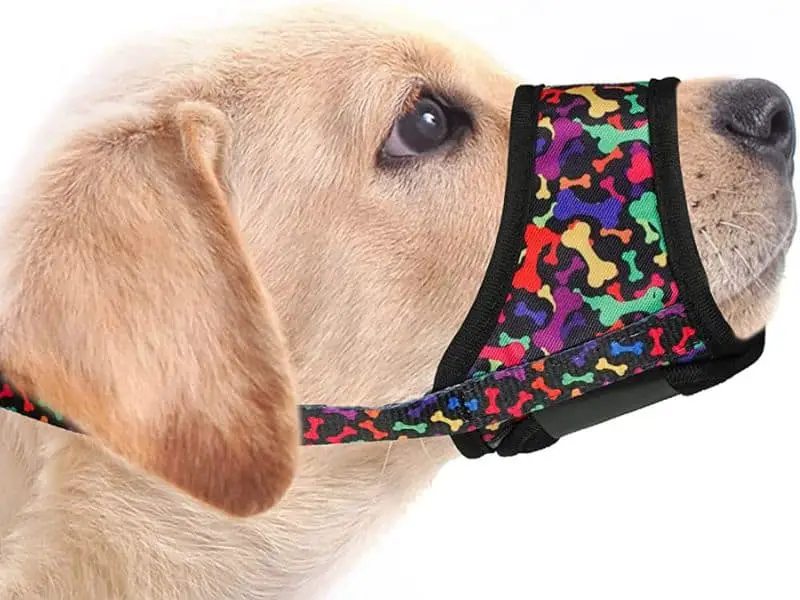
The videos offer lots of info on muzzles. Viewers can learn why picking the right size is important based on their pup’s needs.
They can also explore the materials used in muzzle-making. It also highlights different designs for dogs with varying nose shapes, including long and slim, broad, or flat-nosed.
By watching these videos, owners can better understand the choices available and make informed decisions when buying a muzzle.
YouTube also provides access to online courses and tutorials. These can help dog owners accurately measure their pup’s snout for a proper fit. For instance, you can find video courses with step-by-step instructions to measure length and circumference.
Some emphasize the importance of getting the measurements right. Additionally, manufacturers often have their own channels with content to offer helpful size tips and suggestions.
YouTube is an excellent platform for dog owners to gain comprehensive information on muzzles and other important equipment.
Online courses and tutorials for measuring your dog for a muzzle
You can often find online courses and video tutorials to help dog owners find the perfect muzzle for their pup! This resource focuses on getting accurate measurements, plus the various options available. Plus, it offers guidance on muzzle training and gradual acclimatization.
Here’s what you can expect:
- Step-by-step instructions for measuring the length and circumference of your dog’s snout.
- An emphasis on accuracy when selecting a muzzle for both comfort and safety.
- Insights into the different types of muzzles available in the market.
- A demo on how to properly fit the chosen muzzle, including tips on adjusting straps.
- Helpful advice from manufacturers if more assistance is needed.
Contacting manufacturers for assistance with sizing and recommendations
Manufacturers can be a big help with sizing and recommending dog muzzles. They can show you how to measure your pup’s snout for the perfect fit. You can follow their instructions, or use their tools, to get the right length and circumference.
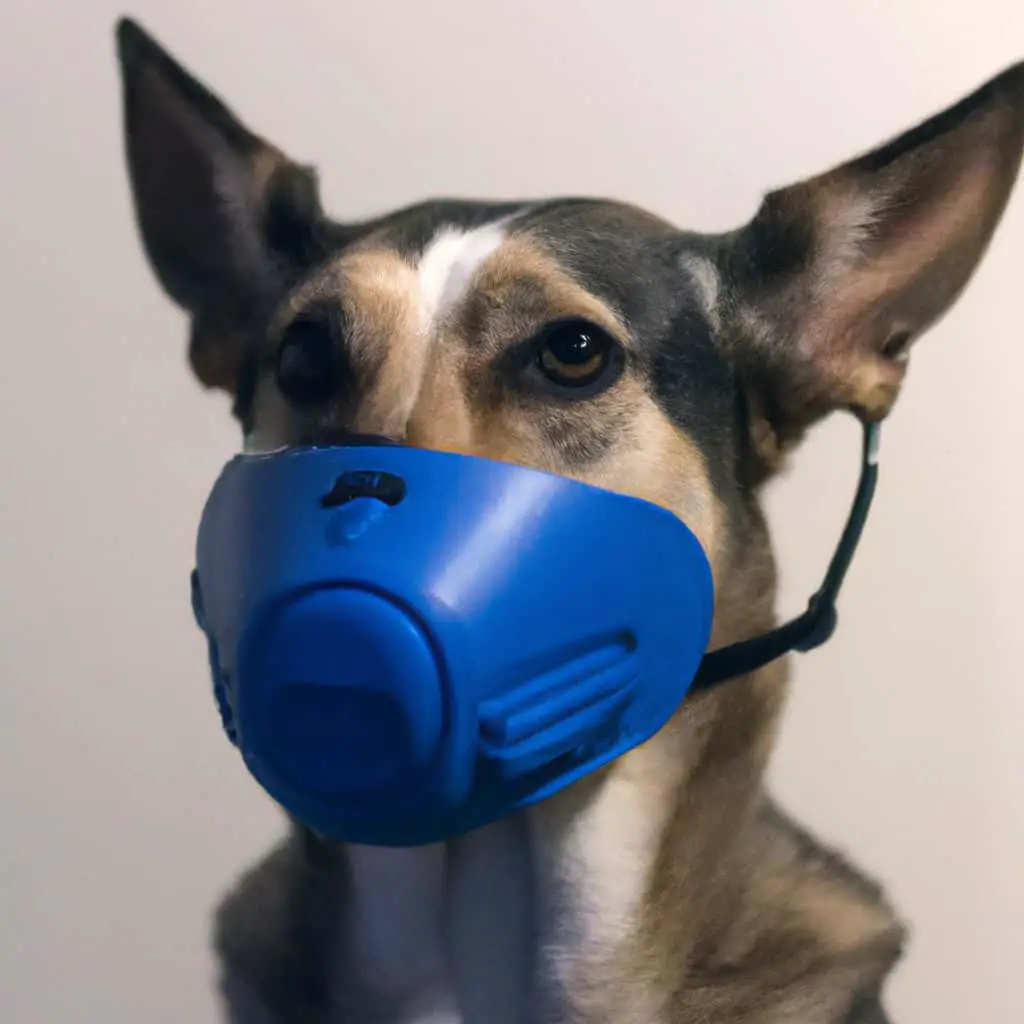
Then, give the measurements to the manufacturer, who can tell you the right size for a snug fit.
But manufacturers can do more than just size. They know their products and can recommend one based on your pup’s unique needs.
If you need a muzzle that follows rules, stops biting, or provides safety, they can suggest a few that will work. Their expertise will help you choose the best one for your dog.
When you contact them, tell them about your pooch. Breed, age, and any special behaviors or problems you have with them. This way, the manufacturer can give you personalized advice.
The Right Sized Muzzle
Finding the right muzzle size for your dog is paramount in ensuring their safety and the safety of those around them.
Finding a properly fitting muzzle for the safety of your dog and those around them
A fitting muzzle is paramount for your pup’s safety and that of those around. It ensures that your pup can’t bite or hurt anyone while still allowing them to pant, drink, and feel cozy.
The importance of the right size muzzle:
- No bites: A good muzzle prevents your pet from biting or hurting others or animals. Especially if they have a history of aggression or haven’t been socialized.
- Risk management: The right muzzle size reduces the risk of unexpected aggressive behavior in public when your pup feels threatened or anxious.
- Legal compliance: In many areas, certain breeds or aggressive dogs may need to wear a muzzle in public. The right fit helps you obey the law and sidestep legal troubles.
When choosing the perfect muzzle for your pup:
- Accurate measurements: Measure your pup’s snout accurately – both length and circumference – this will help you find the ideal size and shape.
- Comfort and safety: A well-fitted muzzle should be comfortable for your pup to wear for long hours without any pain. Plus, there should be enough space for panting and drinking while still preventing any biting.
- Muzzle types and features: Evaluate different muzzle features and benefits for your pup’s needs and nose shape when picking the right one.
Recap key points and encourage responsible dog ownership
To promote responsible dog ownership, it is important to remember the key points of muzzle safety and the importance of getting the right size. A good fitting muzzle ensures safety and comfort.
To find the right muzzle, measure your dog’s snout length and circumference. Don’t rely on breed guidance, as individual dogs vary in size and shape.
When selecting a muzzle for your dog, think about any specific needs such as rule adherence or bite prevention. Make sure it fits well and is comfortable with wide, soft straps or extra space. Do muzzle training and gradual acclimatization for safety and overall well-being.
Some Facts About Muzzle Safety: How to Find the Right Dog Muzzle Size:
- The key to finding the best fitting dog muzzle is to not rely solely on breed guidance on size tables.
- Ask trainers, charities, and veterinarians to recommend muzzles for dogs.
- Measuring your dog’s nose length correctly is important to ensure the muzzle does not slip off during wear.
- If buying online, it is suggested to purchase multiple options and return the unwanted ones.
- The muzzle should allow the dog to pant and drink, especially during exercise or extended wear.
